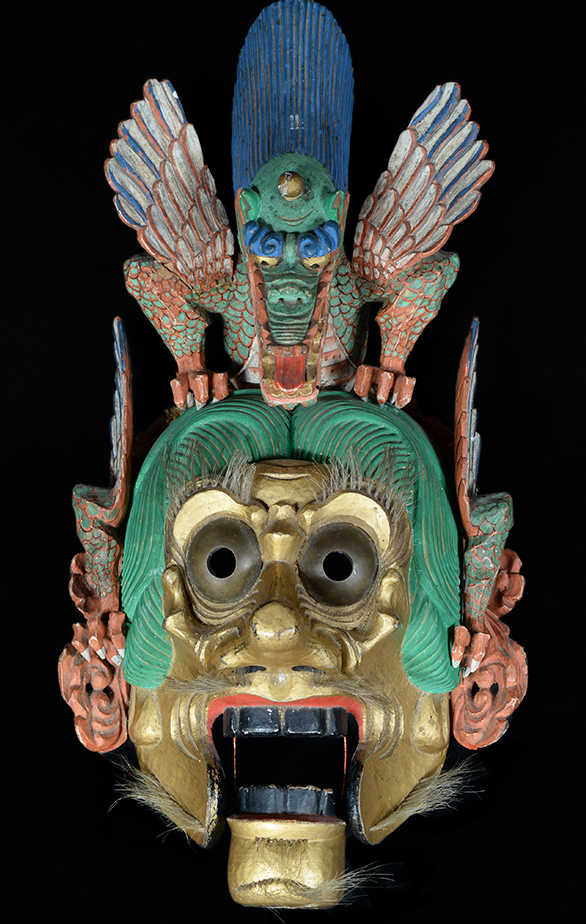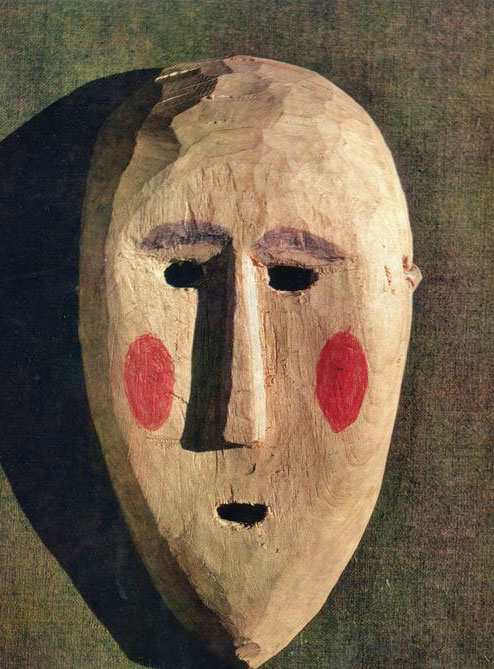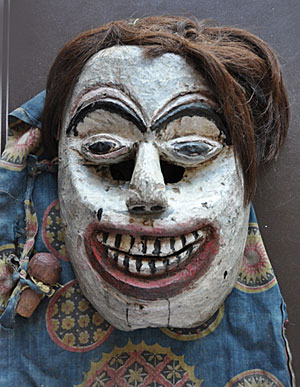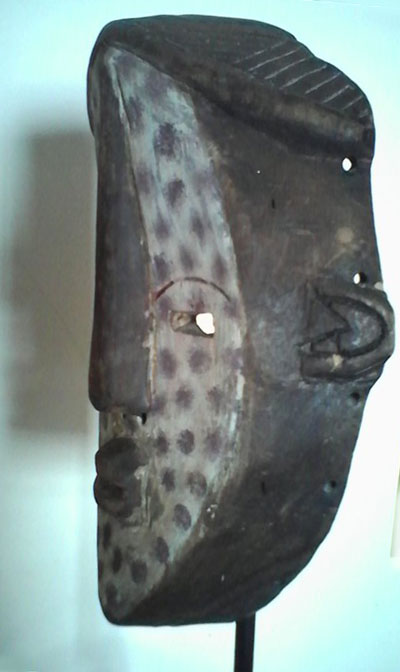 Our great friend, Aron Fellmeth of Second Face Museum of Cultural Masks has this to say: Bugaku is an official court dance of Japan, dating back to about 500 C.E. During the Heian period, Bugaku dances were so central to protocol that nearly all ceremonies and festivals included them. The dance was especially important in appeasing angry gods, purifying the village, and petitioning the gods for rain or a good harvest. The dance is performed to the music of drums and flutes. The dancers enter the stage singly in succession, then dance together in pairs, in synchronicity to varying tempos. Each dance has its own mask and is named after the mask.
Our great friend, Aron Fellmeth of Second Face Museum of Cultural Masks has this to say: Bugaku is an official court dance of Japan, dating back to about 500 C.E. During the Heian period, Bugaku dances were so central to protocol that nearly all ceremonies and festivals included them. The dance was especially important in appeasing angry gods, purifying the village, and petitioning the gods for rain or a good harvest. The dance is performed to the music of drums and flutes. The dancers enter the stage singly in succession, then dance together in pairs, in synchronicity to varying tempos. Each dance has its own mask and is named after the mask.
Bugaku masks were sometimes made of wood, like this one, and sometimes made from kanshitsu, a composite of sawdust and resin shaped over a mold. This mask was danced in the early 20th century. It is similar to a much older one in Nara, used at the Kasuga Taisha for festivals. The chin is attached by silk cords to allow the mouth to swing freely with the dancer’s movements.
The Rangryo mask represents a young Chinese king who was renowned for his beauty, but who could not intimidate his enemies. In battle, he donned a hideous mask surmounted by a dragon to hide his face and frighten his enemies. The dance is a solo dance; it is highly martial and more active than many other Bugaku dances. For more on Bugaku masks, see Kyōtarō Nishikawa, Bugaku Masks (Tokyo: Kodansha International Ltd. 1971).








